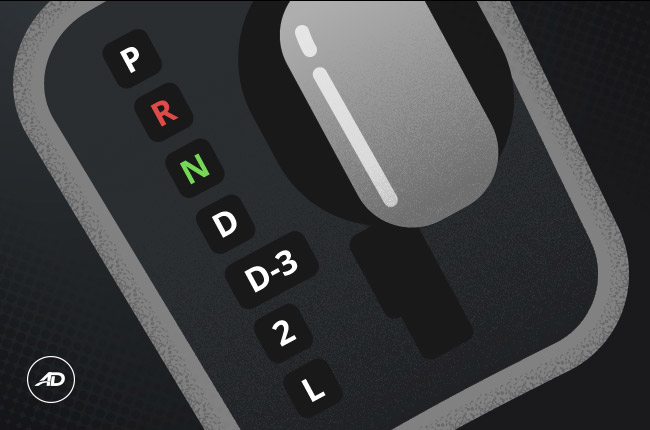
Aside from the obvious ones like the P (Park), R (Reverse), N (Neutral), and D (Drive), there are other things written on the indicator of your automatic transmission lever. These are drive modes you use on specific road situations. But what does L, 2, and D3 mean and when do you use them?
By the way, this is our response to the questions we received about the drive modes after we wrote the article about the things you shouldn’t do when driving an automatic transmission.
L (or Low)
Your guess is right – L stands for low. When in this mode, the engine will stay in its lowest possible gear ratio, which is basically the 1st gear. Some older automatics lock it in 1st gear but for the modern ones, it will shift up to the next gear at a certain range of revolutions per minute (RPM) to prevent damage and to lessen the stress on your vehicle’s engine and transmission.
Where to use?
You can use this gear in downhill or uphill climbs that need steady and low speed – like driving on a heavy, moving traffic on a quite steep hill. For example, if you’re going uphill on an unfamiliar winding road – like the Kennon Road to Baguio or the Pantabangan Road to Baler – you can engage L so that you’ll have enough climbing power.

2
Just like the L mode, the 2 mode means that the engine will only use the first 2 gears of your car. It will maximize the RPM of each gear to get the needed pull from the engine. However, in other models, it will start and lock in 2nd gear and will just move up when a certain range of RPM is reached to mitigate engine damage.
Where to use?
Since the range of RPM is maximized, the 2 driving mode is essential when driving a fairly steep uphill so you can utilize your car’s torque. When taking the Baguio route mentioned above, you can switch to this mode if you’re already familiar with the turns so you could speed up a little. You can also switch to this mode when going downhill to engage engine braking – taking out the stress from your brakes.
Take note, though, that this can affect your car’s fuel efficiency since it will be using more gas in higher RPMs. But keep in mind that your safety should be your number one priority.
D3 (or 3)
As the name suggests, the D3 (or sometimes just 3) mode will only utilize the first 3 gear ratios of your car, or in some, locks it on the 3rd gear only. Just like the 2 and L, it will shift at a higher gear if the maximum RPM has been reached. It will also maximize the RPM range per gear for the needed power and pull.
Where to use?
Since this limits the car up to the third gear only, the speed will also be limited for cruising. This is useful especially when towing a trailer or another car since you have to control your speed. You can also use this during heavy rainfall where slowing down is highly recommended. For other do’s and don’ts in driving in the rain, visit the AutoDeal blog.
Some brands also have the +/- or the M shift mode. This is usually in combination with paddle shifters at the back of the steering wheel; an up and down option on the gear shifter; or a +/- switch on the shifter knob. You can use this to downshift or upshift manually in certain situations without getting out of the automatic transmission capability. For example, when overtaking, it’s recommended that you downshift in order to get the needed power. You can do this with the +/- mode.
These are the most common modes you could see in cars today. Others may have more but that can be car specific so you can refer to your owner’s manual for instructions. With proper use of these driving modes, you will be able to maximize the use of your car even when it has an automatic transmission.
Latest Features
-
An all-electric future: The Porsche Macan Electric / Featured Article
Porsche’s Macan goes all-electric; it’s a new beast with an electrified heart, yet unmistakably Porsche in performance and spirit.
-
Which Kia should I buy? / Featured Article
We’re here to help you decide which Kia vehicle is best for you, whether it’s a sedan, crossover, or minivan.
-
Why Lynk & Co is a good option for luxury car buyers / Featured Article
Lynk & Co offers premium value for those exploring the luxury market.
Popular Articles
-
Electric Vehicles in the Philippines for under P1 million
Jerome Tresvalles · Aug 19, 2025
-
Top 3 Cars For Every Lifestyle—What Cars Are Right For You? | Behind a Desk
Caco Tirona · Apr 24, 2024
-
5 Tips to Maximize Fuel Efficiency
Jerome Tresvalles · Sep 09, 2024
-
Five driving habits that are draining your fuel tank
Jerome Tresvalles · Jun 24, 2025
-
Can engine braking harm your engine?
Jerome Tresvalles · Sep 11, 2025
-
Do electric cars even need maintenance?
Jerome Tresvalles · Oct 23, 2024
-
Best vehicles for an active outdoor lifestyle
Shaynah Miranda · Jul 25, 2024
-
How to drive different types of vehicle transmissions
May 23, 2024
-
5 easy ways to keep your car interior clean
Allysa Mae Zulueta · Nov 15, 2021
-
How to survive Metro Manila traffic
Earl Lee · Aug 16, 2022





